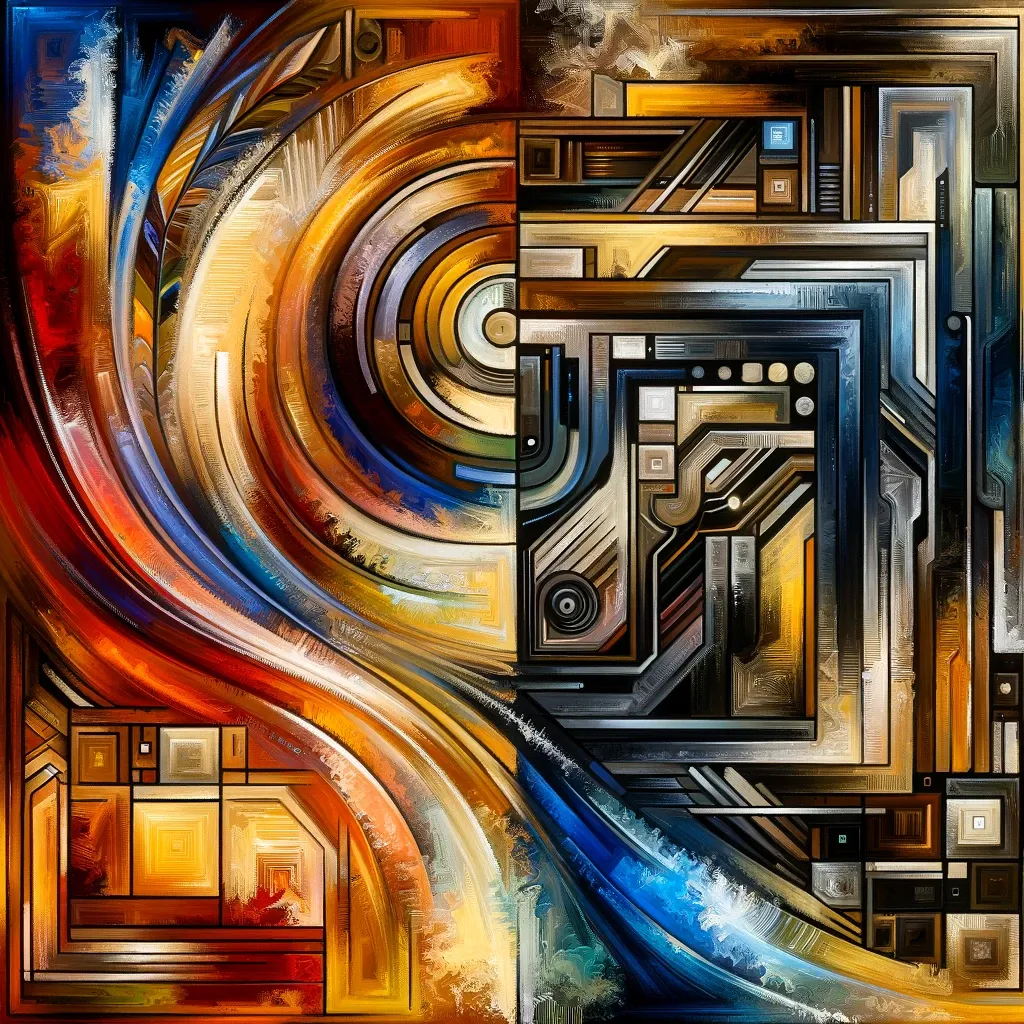The Transformation of Culture in the Digital Age: Is Everything Fake?

Defining Culture in Contemporary Society
Culture as a Historical Continuity vs. Personal Experience:
Culture is many things. The food you eat, the language you speak, the clothes you wear, and the music you listen to. It is the tapestry of values, traditions, and expressions passed through generations, encapsulating a wide range of collective practices from civilizations that have passed. In contrast, the concept of culture in contemporary settings increasingly reflects personal experiences influenced by individual choices and societal dynamics. Individualism is the strong undercurrent of modern secularised societies. This shift has changed the culture to be inherited, individually, and actively created within the broader frameworks of modern life. I argue that technology plays a significant role in this shift. This evolution challenges the static view of culture that traditionalists yearn for. It is a more fluid and maybe alienating reality. Understanding all of this jazz can help you adapt to the rapid changes brought about by global connectivity and technological advances.
The Shift from Tangible to Digital Artifacts:
The digitization of culture has led to the creation and consumption of cultural artifacts in digital forms, fundamentally altering how they are accessed, experienced, and preserved. Digital artifacts, such as eBooks, digital art, and virtual concerts, offer unprecedented accessibility but raise concerns about these formats' longevity and authenticity. Who controls the data servers? As more cultural interactions occur online, from museum tours to music festivals, there's an ongoing debate about the impact of these changes on the depth and richness of cultural experiences. This transition challenges traditional methods of cultural preservation and highlights the need for robust and decentralized approaches to maintaining cultural heritage in the digital age. It is critical to avoid manipulation from agendas foreign to our own from nefarious actors who influence the digital infrastructure.
The Mechanization of Cultural Production
Technology as a Catalyst for Cultural Change:
Historically, technological innovations have influenced cultural development, shaping communication, artistic expression, and social interactions. Think of the ages named after the elements (Stone, Bronze, and Iron Ages); the Industrial Revolution. The printing press, radio, and television each brought about their impacts on the way we created and consumed culture. Today, digital technologies facilitate instant communication and content sharing across the globe, further accelerating cultural change. This section examines how these technologies reshape cultural landscapes, emphasizing the positive outcomes, such as increased accessibility and diversity in cultural expressions, and potential drawbacks, including the oversaturation of content and the erosion of traditional cultural forms.
The Role of Artificial Intelligence in Cultural Simulacra:
AI hype has fueled a new form of content creator, a Photoshopper on steroids. They generate content miming human cultural outputs, from writing and art to music. While AI can enhance creative processes, it also raises concerns about the creation of simulacra—imitations that lack the depth or context of human-generated artifacts. Perfect for a bunch of zombie algorithm-driven content posters. This phenomenon leads to cultural dilution where the distinction between authentic and artificial becomes blurred, potentially undermining the cultural significance and the original intent behind cultural works. Or maybe with a person in the loop, it just means more dreams can be fulfilled for those who could not before.
Digital Media and Perception of Reality
Media’s Influence on Cultural Perception:
Digital media profoundly influences how cultures perceive reality and construct public narratives. Platforms like social media shape and sometimes distort our understanding of world events and cultural phenomena through curated feeds and algorithm-driven content - controlled by agenda but others foolishly believe this to be some abstract market forces. This manipulation can alter public perceptions, influencing everything from political opinions to personal identity. Funny enough, traditional media houses are going to have to contend with internet troll accounts on a more level playing field. Whose propaganda is going to be stronger?
Virtual Communities and Cultural Identity:
The rise of the internet has enabled the formation of virtual communities that offer new spaces for cultural expression and identity formation. These communities allow individuals to connect based on shared interests, values, or experiences, regardless of physical location. This phenomenon has redefined notions of community and culture, proposing a more inclusive but complex landscape where identities are both global and hybridized. The impact of these communities on traditional cultural identities and the potential for creating a pluralistic but fragmented cultural sphere are explored.
Technological Determinism and Cultural Evolution
Technology as a Determining Force in Culture:
Technological determinism posits that technological advancement is the primary driver of societal change, including cultural transformations. This perspective helps us understand how technological forces shape cultural norms and practices, often dictating the pace and direction of cultural evolution. We are beholden to the environment just as much as we drive it. Life was never going to remain static, after all, how many of us no longer do agricultural work?
The Impact of Technological Innovations on Social Structures:
Technological innovations can reshape social structures by altering how people interact, communicate, and perceive themselves and others. Technologies such as social media and mobile connectivity have changed the dynamics of personal relationships and community engagement, often enhancing connectivity but at times isolating individuals from traditional social settings. Remember when the kings, nobles, and the priest class were at the top of the social structure and merchants were viewed with suspicion? I don't, and neither do most of you. While merchants are still suspicious, there is no doubt that they run the show in many liberal institutions.
Balancing Technological Advancements with Cultural Preservation
The concluding section emphasizes the need for a balanced approach to embracing technological advancements while preserving and respecting cultural heritage. It discusses strategies for leveraging technology to enhance cultural practices without compromising their intrinsic values. The goal is to ensure that technological progress supports cultural diversity and richness, rather than undermining it, fostering a future where technology and culture coexist harmoniously and enrich each other.

